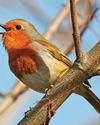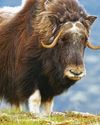
If you look at life on this planet, there is staggering variety. From pine trees to porcupines, and seaweed to stegosaurs, living things have evolved and adapted into almost every form imaginable. However, despite all these differences, there is one strand that connects all life: DNA. Read on to discover what this fascinating molecule is, and how scientists studying it are uncovering life’s biggest secrets.
Look inside
If you look at any organism (living thing) up close under a microscope, whether it is a plant, animal, fungus or even bacteria, you will start to see some similarities between them. First of all you will see cells. These structures are tiny bags of mostly water, as well as some very important chemicals needed for life, including DNA.
DNA is basically a detailed list of instructions. Within its snaking structure, it contains all the information needed to create each organism – what it will look like and how it will work. Despite its vital role, it is surprisingly simple. DNA is a long twisting ladder, made up of two strands of sugars that are linked together by rungs made of four different molecules, called bases.
A simple code
This story is from the Issue 66 edition of The Week Junior Science+Nature UK.
Start your 7-day Magzter GOLD free trial to access thousands of curated premium stories, and 8,500+ magazines and newspapers.
Already a subscriber ? Sign In
This story is from the Issue 66 edition of The Week Junior Science+Nature UK.
Start your 7-day Magzter GOLD free trial to access thousands of curated premium stories, and 8,500+ magazines and newspapers.
Already a subscriber? Sign In

SUGAR RUSH
Join the candy craze as Claire Karwowski studies the sugary science of sweets.

Wildlife watch
Stevie Derrick shows you what to spot in nature this month

The Sixth Sense
Could humans have more than five senses?

Catherine Heymans
Meet the starry-eyed astronomer who loves backyard stargazing.

WORLD OF WHIFFS
Stevie Derrick follows her nose to track down the world's grossest stinks and nastiest niffs.

Dogs can understand names of objects
Humans enjoy talking to their dogs. If you have a four-legged friend of your own, you might have taught them to respond to commands like \"sit\" and \"stay\".

Smoke rings in the sky
In April, videos were filmed of Mount Etna, a volcano on the Italian island of Sicily, puffing what looked like smoke rings into the sky.

Huge gold nugget found
A gold nugget that could be the largest ever found in England was recently put up for auction. Metal detectorist Richard Brock discovered the nugget on farmland during an organised expedition in Shropshire last year.

Evolutionary tree shows birds in a new light
Researchers have produced the most detailed evolutionary tree of birds ever.

The largest plane to ever fly
Take a first look at the mighty Radia WindRunner aircraft